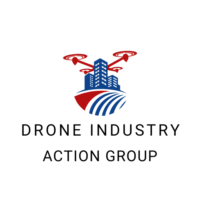Executive Summary
The UK drone economy may be worth up to £42bn by 20301. The Drone Industry Action Group (DIAG) aims to identify and address barriers to growth. It has reached a consensus that negative public perception and an uninformed commercial sector are significant potential barriers to growth, has formed a working group and identified a strategy to address.
The approach to address public and commercial perception to maximise the potential for the growth of the UK drone economy includes how to target and influence groups that have the most negative perceptions and/ or the most potential to drive economic growth.
The DIAG will act as a repository and distribution mechanism for “drones for good” case studies, be these aimed at public or commercial perception groups and noting that the engagement strategy differs significantly for these groups. Campaigns to address negative public perception will use survey information to identify target groups and use “drones for good” human interest stories in an attempt to present a balanced view of drones. Campaigns to unlock the untapped economic potential of drones will be targeted at industry sectors that have the most growth potential, following a consideration of growth potential, technology availability and drone-use maturity. Such campaigns will focus on demonstrating the tangible economic, safety and social benefits of drones in target industries, or in comparable industries.
Several DIAG working group sessions have been completed and the working group has input into PwC’s public and commercial surveys. These surveys, which were announced on June 4th 2019, confirm that there are significant perception issues to address and indicate that the working group is focussing in the appropriate areas.
Proposed approach
The group believes that “drones for good” case studies may be obtained (from within and beyond the DIAG), assessed and prioritised by the group at no cost and that those that submit case studies will be willing to be the “face” of such stories if appropriate.
To deliver effective campaigns, additional funding of £85k is sought, to cover a 12 month period of activity. Funding is required to ensure messaging and distribution is effective and would be expected to include items such as website design and maintenance, PR firm engagement to develop and edit content and distribute through traditional and social media. This funding will be used solely for supporting the working group and will not be used to fund any member firm’s business activities, unless and only to the extent that they are involved in one of the campaigns. A level of marketing support may be provided by the Connected Places Catapult (CPC). It is anticipated that, after initial setup and website build, there will be 10 monthly campaigns, each featuring one public and one commercial case study.
The intention is that BEIS offers a level of funding and that, as far as possible, this is matched by industry. At time of writing (June 2019), if we exclude in-kind support, we have £5K pledged by industry (Cranfield University) toward the £85K target. The DIAG meeting of June 5th 2019 agreed a series of actions to unlock further funding from industry.
The in-kind support from the DIAG to get to this stage has been calculated as £15K, with a further £20K anticipated were the initiative to go ahead, along with an estimated £15K of in-kind support from the CPC. While these figures do not count towards the £85K target, they clearly show that industry is investing and intends to invest in this key initiative.
Resource Summary
“In kind” support to date and anticipated: £50K
“Additional funding” required to continue the working group and launch a 10 month campaign: £85K
- In kind:
- DIAG Working Group – £35K in-kind support, not part of the £85K funding target
- To date, including survey – in kind support from DIAG, TSC market analysis – £15K
- Collation and prioritisation of case studies, building relationships with key journalists and industry bodies, “face” of case studies support from submitter (in or out of the DIAG) – £20K
- Marketing – in kind support from CPC – £15K
- DIAG Working Group – £35K in-kind support, not part of the £85K funding target
- Additional funding:
- PR and advertising, website – funding required, c.£85K based on two campaign events/ month for 10 months
- Company 1 – identified, subject to confirmation – commercial messaging and website design, build, maintenance – £45K
- Firm 2 – not identified – public messaging – £40K
- PR and advertising, website – funding required, c.£85K based on two campaign events/ month for 10 months
Mechanism for funding and payment: from BEIS and industry to CPC, budget administered by CPC in accordance with working group instructions.
Timetable: go/ no go on “additional funding” and the initiative by July 19 2019, setup July/August (including vendor selection and KPIs), first campaign September for 10 months.
Following is the summary for Introduction to the DIAG:
References

